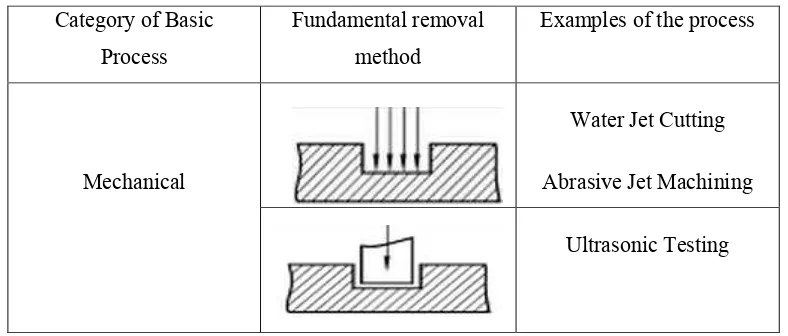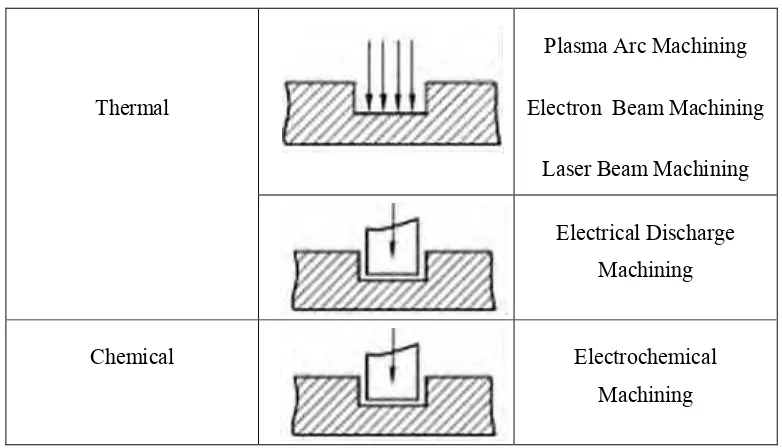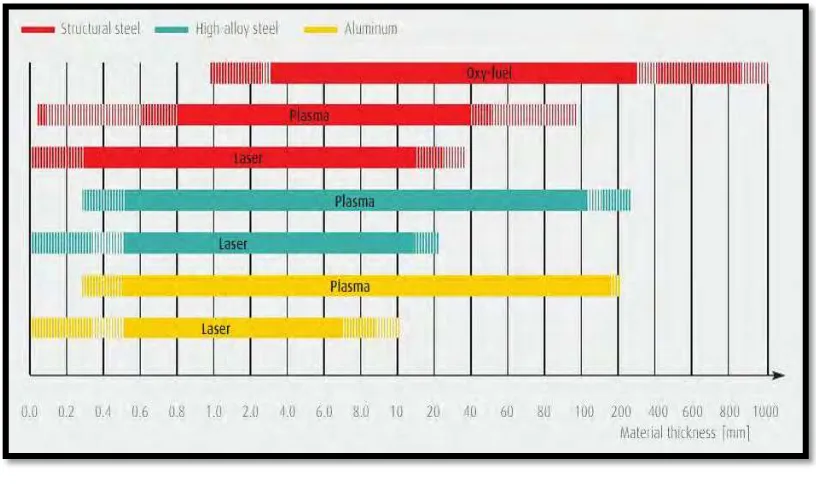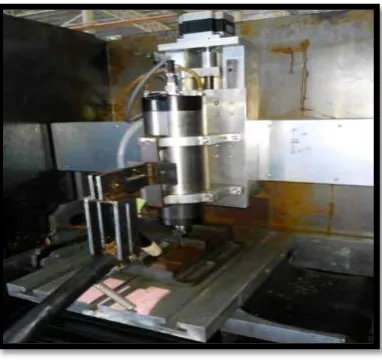UNIVERSITI TEKNIKAL MALAYSIA MELAKA
SURFACE INTEGRITY OF AISI D2 WHEN MACHINED WITH PLASMA
ASSISTED MACHINING
This report submitted in accordance with requirement of the Universiti Teknikal Malaysia Melaka (UTeM) for the Bachelor Degree of Manufacturing Engineering
(Manufacturing Process)(Hons.)
by
SHAHRAIN BINTI AHMAD ROZI B05111026
910111025730
UNIVERSITI TEKNIKAL MALAYSIA MELAKA
BORANG PENGESAHAN STATUS LAPORAN PROJEK SARJANA MUDA
TAJUK: Surface Integrity of AISI D2 when Machined with Plasma Assisted Machining
SESI PENGAJIAN: 2014/15 Semester 2
Saya SHAHRAIN BINTI AHMAD ROZI
mengaku membenarkan Laporan PSM ini disimpan di Perpustakaan Universiti Teknikal Malaysia Melaka (UTeM) dengan syarat-syarat kegunaan seperti berikut: 1. Laporan PSM adalah hak milik Universiti Teknikal Malaysia Melaka dan penulis. 2. Perpustakaan Universiti Teknikal Malaysia Melaka dibenarkan membuat salinan
untuk tujuan pengajian sahaja dengan izin penulis.
3. Perpustakaan dibenarkan membuat salinan laporan PSM ini sebagai bahan pertukaran antara institusi pengajian tinggi. atau kepentingan Malaysia sebagaimana yang termaktub dalam AKTA RAHSIA RASMI 1972)
(Mengandungi maklumat TERHAD yang telah ditentukan oleh organisasi/badan di mana penyelidikan dijalankan)
SURFACE INTEGRITY OF AISI D2 WHEN MACHINED
WITH PLASMA ASSISTED MACHINING
SHAHRAIN BINTI AHMAD ROZI
B051110276
APPROVAL
This report is submitted to the Faculty of Manufacturing Engineering of UTeM as a partial fulfillment of the requirements for the degree of Bachelor of Manufacturing Engineering (Manufacturing Process) (Hons.). The member of the supervisory is as follow:
DECLARATION
I hereby, declared this report entitled “Surface Integrity of AISI D2 when Machined with Plasma Assisted Machining” is the results of my own research except as cited
in references.
Signature : ……….
Author’s Name : SHAHRAIN BINTI AHMAD ROZI
ABSTRAK
ABSTRACT
DEDICATION
Especially for my beloved father, lovely mother, sister, considerate brother and last but not least my lovely friend as well as housemate for supporting me endlessly in term of
ACKNOWLEDGMENT
Alhamdulilah, grateful to Allah S.W.T for good health and well being that were necessary to complete this Final Project.
I wish to express my highest appreciation to my supportive supervisor, Dr. Mohd Hadzley bin Abu Bakar for providing me the valuable guidance and encouragement extended throughout this project. I’m also grateful to technician in faculty of Manufacturing Engineering (UteM) and others for helping and support me in this project
TABLE OF CONTENT
List of Abbreviations, Symbols and Nomenclature xi
CHAPTER 1: INTRODUCTION
2.1 Classification of Machining Process 5
2.2 Advanced Machining Thermal Energy Processes 6
2.3 Plasma Assisted Machining 6
2.7 Factor Affecting Plasma Cutting Process 13 2.8 Effect of Temperature on Properties of Material 14 2.9 Metallurgical and Heat Considerations in Thermal Cutting 15
2.10 Surface Integrity 15
2.11 Surfaces 17
2.12 Surface Alteration 18
2.13 Metallurgical Alteration 18
2.14 Heat Affected Zone 19
2.15 Subsurface Microstructure Alteration 20
2.16 Changes in Microhardness 20
2.17 Tool Steel 21
2.17.1 Classification of Tool Steel
2.17.2 Cold Work AISI D2 23
2.17.3 Composition of AISI D2 Tool Steel 23
2.17.4 Previous Work on the Microstructural Analysis of D2 Tool Steel 24
CHAPTER 3: METHODOLOGY 25
3.4 Experimental Procedure 29
3.4.1 Machining by Using Air Plasma Cutting 29
3.4.2 Sample Preparation 30
3.4.2.1 Machining by using EDM Wire Cut 30
3.4.2.2 Hot Mounting 31
3.4.2.3 Grinding and Polishing 32
3.4.2.4 Etching 34
3.5 Surface Integrity Evaluation 34
CHAPTER 4 : RESULT AND DISCUSSION 36
4.1 SEM Microstructure Images and Observations 37
4.1.1 Subsurface Microstructure of AISI D2 53
4.1.2 Microstructure of AISI D2 before Plasma Cutting 53 4.1.3 Prediction of Microstructure of AIDI D2 after Plasma Cutting 54
4.1.4 Grain Growth 55
4.2 Thickness of Heat Affected Zone 56
4.2.1 Effect of Current 58
4.2.2 Effect of Feed Rate 58
4.2.3 Effect of Air Pressure 58
4.2.4 Effect of Secondary Thermal Based Processing 59
4.3 Microhardness 59
CHAPTER 5: CONCLUSION AND FUTURE WORK 62
5.1 Conclusion 62
5.2 Recommendation for future work 64
REFERENCES 65
LIST OF TABLES
2.1 Classification of Machining Processes based on Energy Used 4 2.2 Comparison of Plasma Cutting with other Cutting Methods 5
2.3 Classification of Tool Steel 22
2.4 Chemical Composition of AISI D2 23
2.5 Mechanical Properties of AISI D2 23
3.1 Actual Work Piece Detail Specification Before Machining 27
3.2 Input Parameters at Low Level and High Level 28
3.3 Specification of EDM Wire Cut Machine 30
3.4 Grinding and Polishing Materials 33
LIST OF FIGURES
2.1 Results of the Maximum Thickness of HAZ 6
2.2 Sequence of State Transformation 7
2.3 Mini CNC Machine with Plasma Torch Attached into the Spindle 8
2.4 CNC Milling Machine 9
2.5 Principle of Plasma Cutting 10
2.6 Standoff Distance 13
2.7 Factors Affecting the Plasma Cutting Process 14
2.8 General Effect of Temperature on Strength and Ductility 15 2.9: Issues that Explain the Surface Integrity of Material 16 2.10 Cross-Section of the Surface Structure of Metals 17
2.11 Schematic Section through a Machined Surface 18
2.12 Microstructure on Work Piece Produced by Plasma Cutting 19 2.13 Shearing of the Workpiece Materials during Machining 20
2.14 Classification of Tool Steel 22
3.1 Flow Chart of Process Planning 26
3.2 Model of Work Piece to be Machined 27
3.3 Air Plasma Cutter 29
3.4 EDM Wire Cut Machine 31
3.5 Phenolic Resin Powder 31
3.6 Buehler Simplimet 3000 Automatic Mounting Press Machine 32
3.7 Samples after Mounting 32
3.8 Buehlers Beta Twin Variable Grinder-Polisher 33
3.9 Etchant, Sandpaper and Colloidal Silica 34
3.10 Scanning Electron Microscope 35
4.1 Scanning Electron Microscope (SEM) Image of Sample 1 37 4.2 Scanning Electron Microscope (SEM) Image of Sample 2 39 4.3 Scanning Electron Microscope (SEM) Image of Sample 3 41 4.4 Scanning Electron Microscope (SEM) Image of Sample 4 43 4.5 Scanning Electron Microscope (SEM) Image of Sample 5 45 4.6 Scanning Electron Microscope (SEM) Image of Sample 6 47 4.7 Scanning Electron Microscope (SEM) Image of Sample 7 49 4.8 Scanning Electron Microscope (SEM) Image of Sample 8 51 4.9 Continuous Cooling Transformation (CCT) Diagram of AISI D2 54
4.10 Bar Graph of Maximum Thickness of HAZ 57
LIST OF ABBREVIATIONS, SYMBOLS AND
NOMENCLATURE
AISI D2 - Cold Work Tool Steel AMZ - Altered Material Zone
CNC - Computer Numerical Control HAZ - Heat Affected Zone
This chapter presents the background of the project, problem statement, objectives and scopes of this project.
1.1 Background of the Project
The trend in manufacturing industry has evolved from using a material that is commonly used in industry into hard to machine advanced material. The rapid growth of advanced materials is due to factor such as it is widely used in various applications due to its excellent properties. Some applications require materials with a certain properties such as high strength, toughness and wear resistant, thus making advanced materials the most desirable materials in industry.
Plasma arc cutting is favorable processes for machining hard to machine materials Sun (2010) states that thermally assisted machined such as plasma arc cutting is the process that uses heat energy for material removal. The material removal is done by means of consuming heat source to heat and soften the workpiece. The yield strength, hardness and strain hardening of the work piece lowered the deformation behavior of the materials that is hard to machine from brittle to ductile. Hence, it improves the machinability of hard materials with low machine power consumption, which leads to increase in material removal rate and productivity
It is crucial to satisfy the component performance and reliability. While machining components, it is necessary to satisfy surface integrity requirements. Surface integrity can be classified into two divisions. The first part is surface texture, which
is mainly about surface roughness. Another class of surface integrity is called surface metallurgy which provides information about the nature of surface layer produced in machining.
Believing the information relating about machining hard material such as AISI D2 using plasma assisted machining is inadequate, this project was conducted to investigate about the surface integrity of AISI D2 steel when machining using plasma assisted machining. The methodology used in this project is experimental procedures. A device called Scanning Electron Microscope (SEM) is employed to accomplish research objective.
This experimental will be performed by using Plasma Assisted Machining. The parameters that will involve in this plasma cutting process are current, feed rate, air pressure and arc gap. Plasma arc cutter used to cut AISI D2 Tool Steel 100 mm x 100 mm x 20 mm based on the selected parameters setting.
1.2 Problem Statement
plasma cutting. Besides, this study is conducted due to the limited study about the surface alteration encountered by AISI D2 using plasma cutting.
1.3 Objectives
The objectives of this experiment are:
a) To characterize the surface integrity of the AISI D2 when machining using plasma assisted machining.
b) To investigate the effect of the cutting parameters selected of air plasma =cutting on the surface integrity.
1.4 Scope of Project
This chapter covers about general knowledge of this thesis. The aim of literature review is to establish a theoretical framework with substantive findings and methodological contribution to this project which includes all the knowledge such as process, work piece will be explained.
2.1 Classification of Machining Process
Machining process can be classified based on the type energy used. Table 2.1 below display the machining process are group according to the type of energy used. Generally the machining processes are classified into three mechanisms of energy which are mechanical, thermal and chemical.
Thermal
Table 2.2: Comparison of plasma cutting with other cutting methods ( Akkurt, 2009 )
Comparison Aspect Plasma
Cutting Cutting Laser Milling Cutting Oxygen Cutting
2.2 Advanced Machining Thermal Energy Processes
As mentioned earlier in Table 2.1, machining can be divided according to the energy processes. The thermal energy process includes electrical discharge machining, plasma arc machining, laser beam machining and electron beam machining. Material removal processes based on the thermal energy are characterized by very high local temperatures, which is hot enough to remove material by fusion or vaporization. Physical and metallurgical damage on the work surface occurred due to the high temperature utilized in this process. In some cases, thermal energy process produced poor surface finish and secondary machining required to smooth the surface.
Figure 2.1: Areas of application of thermal cutting process (Ahmad, 2011)
2.3 Plasma Assisted Machining
solid material is heated to a certain temperature. As the temperature increases, the solid transform to liquid and liquid to gas. Further increase in temperature cause the third stage, gas to charged particles, and the material enters the plasma stage.
Solid Liquid Gas Plasma
Figure 2.2: Sequence of state transformation (Chattopadhyay, 2004)
According to Chattopadhyay (2004), plasma has been used for a large number of thermally assisted surface engineering processes. The list of surface engineering processes based on plasma includes thermal spraying, welding, vapor phase deposition and includes thermal based non-conventional process, plasma arc cutting. Plasma Assisted Machining is a concept of non-traditional machining which utilizes the thermal energy as a medium to machining materials. The idea of using hot machining is proposed by Grzesik ( 2008 ) who employed the plasma assisted machining to improve machinability of glasses, engineering ceramics, sintered high speed steel and alloy steel. Plasma assisted machining use extremely high temperature plasma arc to provide controlled source of localized heat, which soften only a small portion of workpiece. Softening of the workpiece zone just in front of the cutting tool releases very high energy densities and confines the heat.
Figure 2.3.: Mini CNC Machine with plasma torch attached in front of the spindle
2.4 Milling Machine
The mechanism of milling machine is that the material removal is done by removing chips away from the raw material to produce finish product. Milling machine can be divided into two different classes which are vertical and horizontal milling machines. Milling machine can be manually operated or automated by computer numerical control (CNC).
2.4.1 CNC Milling Machine



